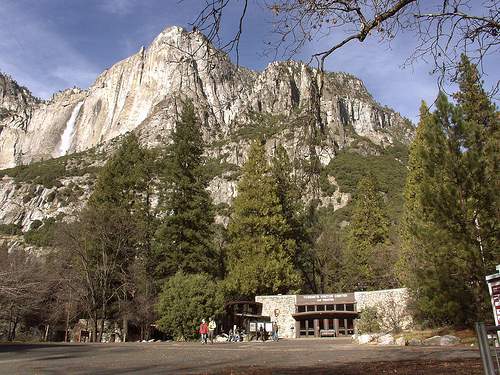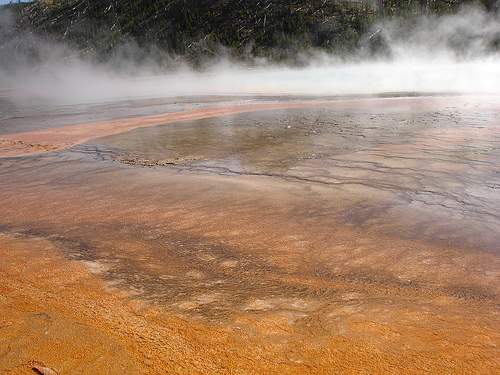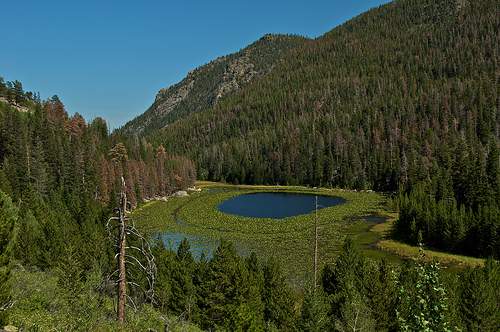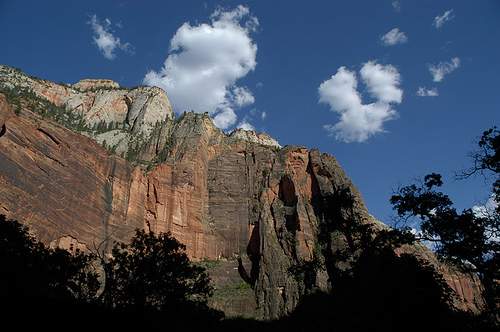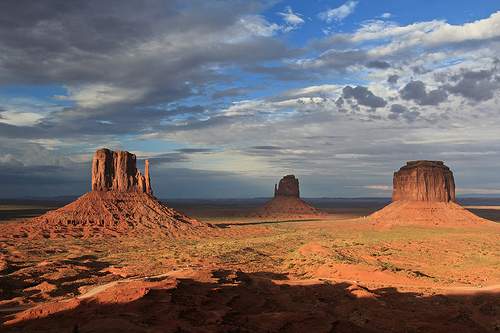The idea of a federally protected land was never seen before. National Parks are without a doubt America’s greatest contribution to the world, with over 75 countries now protecting their most inspiring areas for future generations to enjoy.
As an American cross-country tour guide, I’ve seen the best – and worst – of what the U.S. has to offer. Without question, the National Parks in the Western U.S. remain my favorite. Now, I’d like to share with you an incredible road-trip that winds through some of the world’s most incredible scenery.
Are you ready? Then let’s roll:
Yosemite National Park
One of the three “Crown Jewels” of the National Park System (along with Yellowstone and the Grand Canyon) Yosemite is also one of the most beautiful. Set aside as protected land by Abraham Lincoln in 1864, Yosemite became a National Park in 1890.
What to do: If you’re there in the spring, consider a hike to the top of Yosemite Falls, the highest waterfall in North America. On your second day, trek up the challenging trail to Half Dome. It’s an all-day hike, and the last half mile climbs up the granite dome (hold on tight to those guardrails!).
If you’re visiting between mid-June through September, consider heading north to the drop-dead gorgeous scenery of Tuolumne Meadows (roughly 45 minutes of the Tioga Pass). Famed naturalist John Muir noted the stunning beauty, saying “This I may say is the first time I have been at church in California.”
In Tuolumne Meadows, there are a series of short day-hikes, as well as long multi-day treks (many people hike back to Yosemite Valley from here, a 27 mile two-or-three day journey).
Follow Lyell canyon for picturesque views of the Tuolumne River, or lay out among granite peaks on the sapphire blue waters of Tenaya Lake.
Yellowstone
The first National Park in the world, and rightfully so. Yellowstone sits atop a super-volcano (called a “Caldera”) which may have been responsible for the dinosaurs’ extinction. The caldera is also responsible for Yellowstone’s other-worldly beauty; geo-thermal activity results in super-hot water (enough to melt bone), while chemical gases change the water’s color to bright yellow, sapphire blue, and emerald green.
What to do: No trip to Yellowstone would be complete without Old Faithful. Named for its predictability, this geyser erupts every hour or (check with rangers for times), pumping up to 8,400 gallons of water in under five minutes. Check out the live webcam here.
Spend the rest of the day visiting geysers and hot springs; this area is easily driven. If you’re looking for a little more peace and quiet, head out to Yellowstone Lake, the largest high-altitude lake in North America. Interested in hiking? Visit the Grand Canyon of Yellowstone; day hikes are best in this area due to inclement weather.
Rocky Mountain National Park
The highest road in North America can be found within Rocky Mountain Nation Park. Nestled in the Rockies, this small national park is a great stopping point between Yellowstone and the Southwestern parks, and provides austere vistas common to high altitude mountain ranges.
What to do: If you’re up for it, the 15 mile climb up Long’s Peak (14,259 feet) and back provides breathtaking views of the Rockies. Be warned: hikers should leave well before dawn; afternoon thunderstorms are frequent on the peak.
If ascending mountains before dawn doesn’t sound fun, you can catch views of Long’s Peak from Mills Lake. It’s a short 2.8 mile hike, and perhaps the finest day hike in the park.
Bryce Canyon
Along with Yellowstone, Bryce Canyon has a feel all its own. Frankly, there is no other place in the world like it, and therefore a must-see park for nature lovers. Though smaller than the Grand Canyon, Bryce Canyon’s orange rock spires (called “hoodoos”) pushing up from the canyon floor make this an appealing alternative from the over-hyped, over-crowded Grand Canyon.
What to do: Bryce Canyon contains numerous hiking trails which loop together. Obtain a map from the visitor kiosk before descending down. The beauty of the canyon is that you can easily connect a number of trails together, enjoying the scenery for as long – or as little – as you like.
One little-known attraction of Bryce Canyon is its sky. Because it’s so far from civilization, there is very little light pollution (Las Vegas is the only major city, and that’s 471 miles away!). Be sure to attend a free Astronomy class held in the evening, then enjoy the stars on your own.
Zion National Park
The first national park in Utah, Zion is the perfect follow-up to Bryce Canyon. While both canyons, the similarities end there: Zion offers a variety of hikes (both wet and dry) which challenge hikers physically and – if you have a fear of heights – mentally.
What to do: There are two incredible – and very different – hikes within easy access of the main camping area.
The first is a hike up-river through large canyons called “The Narrows”. Most, if not all the hike is in the Virgin River, making this an ideal afternoon hike in the sweltering summer heat. Be sure to waterproof your valuables, and consider renting walking sticks and special shoes (not necessary, but they make the hike easier).
The second hike climbs up 1,488 feet to Angel’s Landing. If you’ve hiked up Half Dome, prepare for a shock: the final portion of Angel’s Landing is even more nerve-wracking. Hold on tight to those chains!
Monument Valley
Perhaps the most overlooked park, Monument Valley not only looks different than other parks, it feels different. There’s a vibe here unlike anywhere in the world, perhaps thanks to its native caretakers. Technically speaking, Monument Valley is part of the Navajo Nation (and not part of the U.S.).
What to do: To fully experience the wonder of Monument Valley, take an overnight Jeep tour into the valley. Your Navajo guide will explain the history of the Navajo, and demonstrate traditional activities like weaving. You’ll enjoy dinner in the canyon, and end the night with a traditional Navajo dance party (which is infinitely more fun than it sounds!).
Grand Canyon
If Monument Valley is the most overlooked, Grand Canyon National Park is the most overhyped. I’m including this here because, perhaps understandably, the Grand Canyon is the most popular National Park in the U.S. (due to it’s impressive view).
After seeing Bryce and Zion Canyons, the Grand Canyon may seem heavily trafficked and commercial by comparison. But there is no denying: the view of Grand Canyon is indeed world-class.
This road-trip is one I’ve done many times, and it never ceases to impress. I highly suggest purchasing an annual pass, which allows you to visit all national parks for one low price (currently it’s $80, which is a huge savings over paying individually).
Read more on national parks and outdoor adventure:
- 10 Awesome Treks That Almost Anyone Can Do
- 10 of the Best Places to Hike in the US
- How to Escape the Crowds at the Most Popular National Parks
- Five Best US Cities for National Parks Lovers
- Best National Parks iPhone Apps
Adam Costa (@MrAdamCosta) is a freelance travel writer and author of Business In A Backpack. He writes about travel and cycling at ItalyBikeTours.net.
